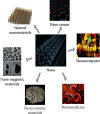Exploration of the Visual Function after the Implantation of Continuous Visual Range Human Cocrystal Micromonocular Vision in Both Eyes of the Patient
- PMID: 35295177
- PMCID: PMC8920647
- DOI: 10.1155/2022/6000977
Exploration of the Visual Function after the Implantation of Continuous Visual Range Human Cocrystal Micromonocular Vision in Both Eyes of the Patient
Retraction in
-
Retracted: Exploration of the Visual Function after the Implantation of Continuous Visual Range Human Cocrystal Micromonocular Vision in Both Eyes of the Patient.J Healthc Eng. 2023 Sep 20;2023:9872865. doi: 10.1155/2023/9872865. eCollection 2023. J Healthc Eng. 2023. PMID: 37772029 Free PMC article.
Abstract
Eye diseases such as myopia, hyperopia, astigmatism, and cataract are have affected most people at home and abroad for many years. With the development of science and technology, people who wear glasses are now younger, and they are on the rise over time. This paper is to explore the visual function after the implantation of continuous visual range human cocrystal micromonocular vision in both eyes of the patient. On this basis, the latest visual sensor technology is used to conduct clinical research on the operation, a case-control study is performed on the patient's eyes, followed by intraocular lens insertion surgery, one eye is hemitrope and the other eye has a certain degree of intraocular lens inserted, and it is recorded within a period of time after the operation. According to the analysis of the experimental results, the patient's naked eye and corrected distance vision is (t = 2.102, P = 0.049), middle distance vision (t = 1.403, P = 0.200), and near vision (t = 1.463, P = 0.216). After the operation, the ratio of patients taking off glasses 91.8%. After the continuous visual range intraocular lens micromonocular vision design, it can well correct the patient's near and far vision of the naked eye of both eyes.
Copyright © 2022 Fangrong Cai et al.
Conflict of interest statement
The authors declare that there are no conflicts of interest regarding the publication of this paper. The simulation experiment data used to support the findings of this study are available from the corresponding author upon request.
Figures












References
-
- Shrestha C., Shrestha S., Manoranjan A. Evaluation of Visual Function Test of Central Serous Chorioretinopathy After Intravitreal Bevacizumab. Medical Journal of Shree Birendra Hospital . 2019;18(1):37–42. doi: 10.3126/mjsbh.v18i1.21073. - DOI
-
- Fernández-García J. L., Llovet-Rausell A., Ortega-Usobiaga J., et al. Unilateral Versus Bilateral Refractive Lens Exchange With a Trifocal Intraocular Lens in Emmetropic Presbyopic Patients. American Journal of Ophthalmology . 2021;223:53–59. - PubMed
Publication types
MeSH terms
LinkOut - more resources
Full Text Sources

